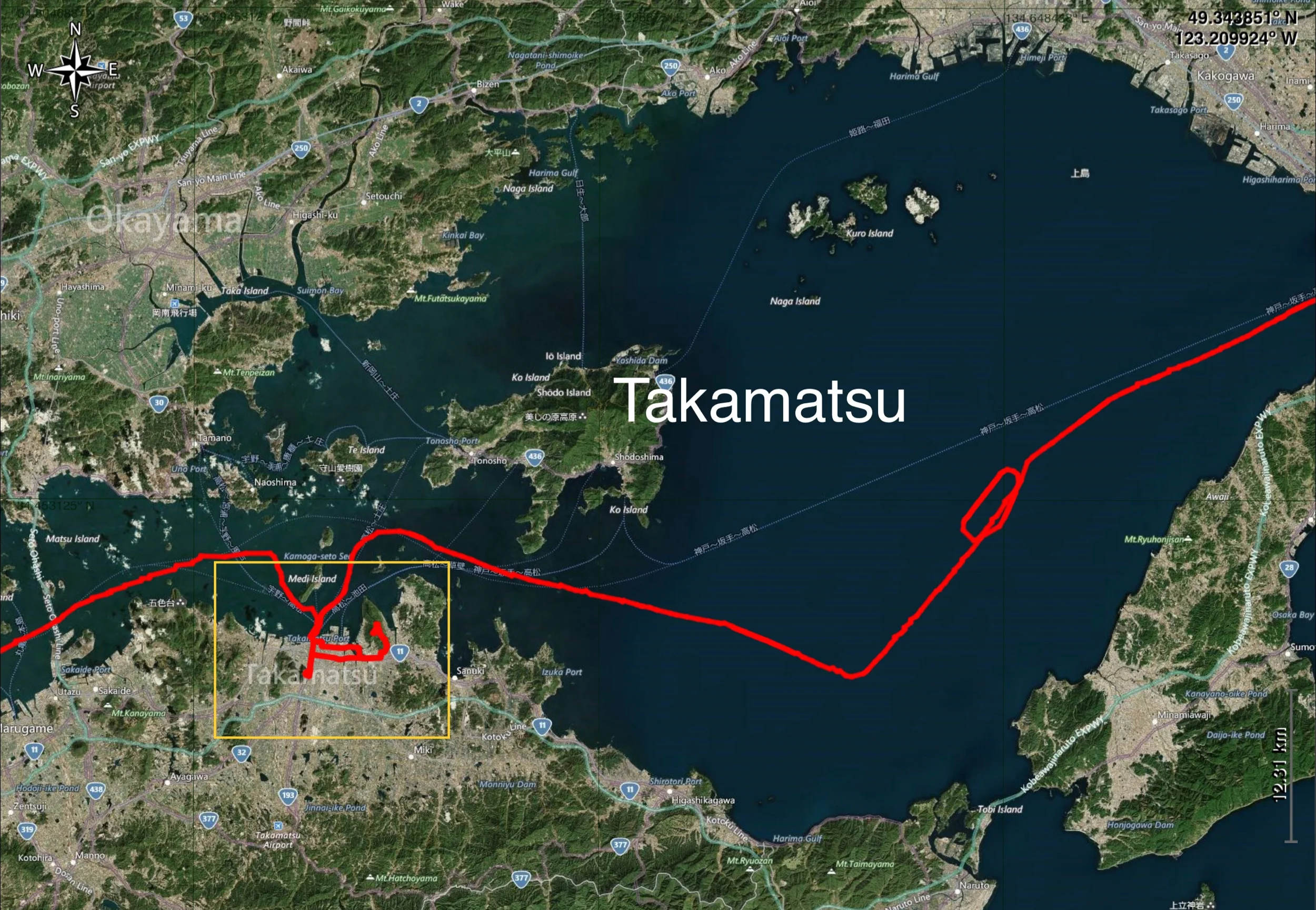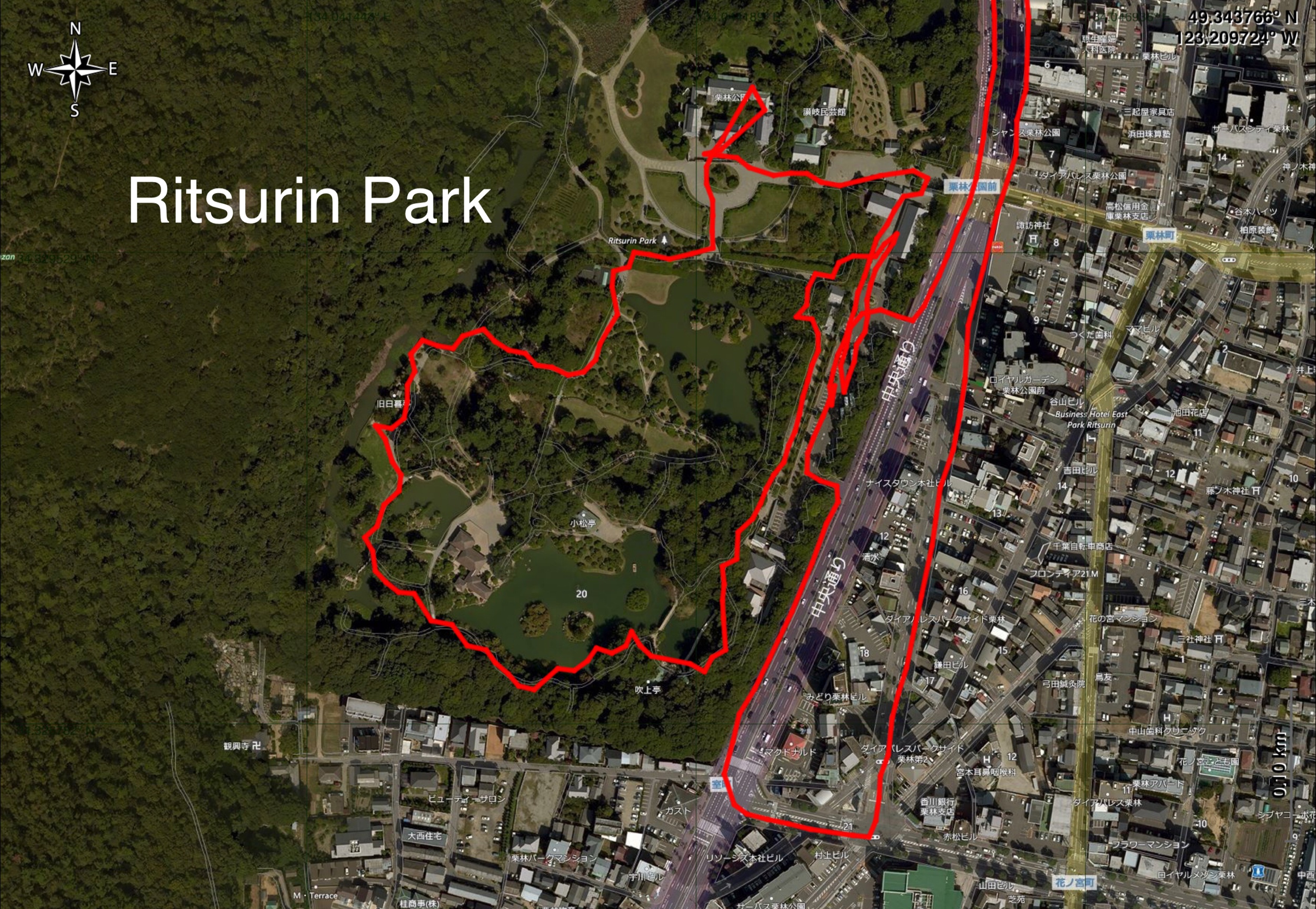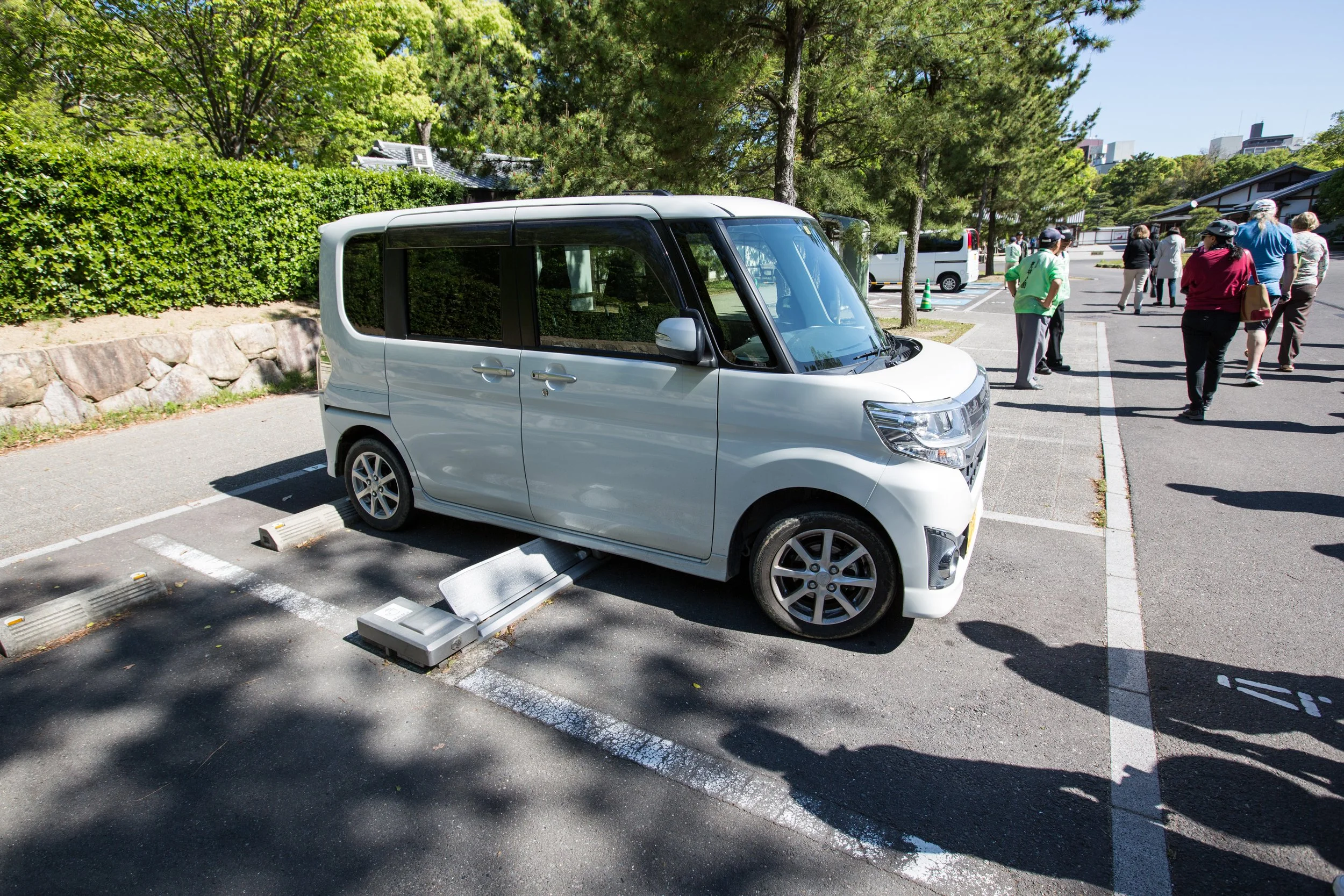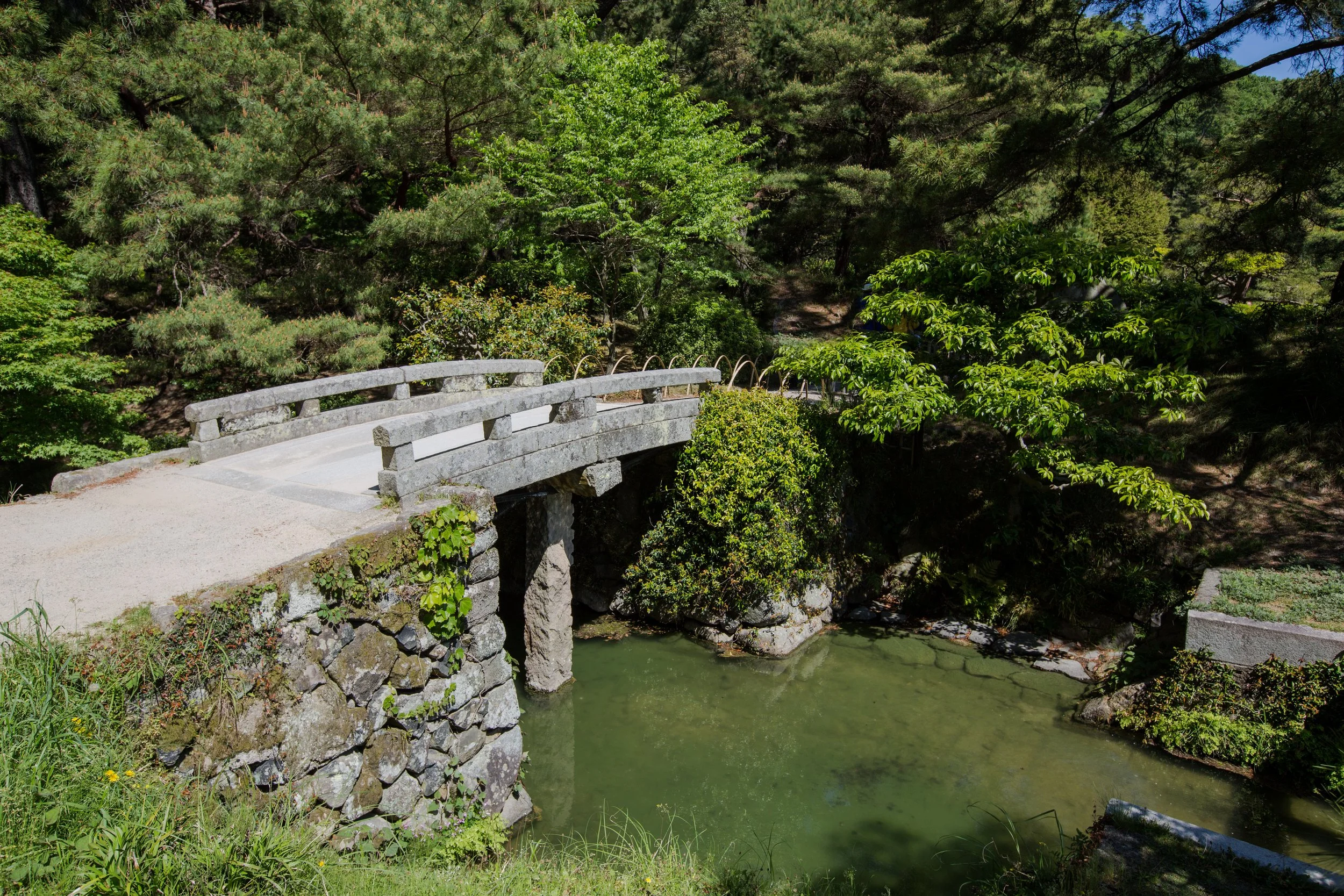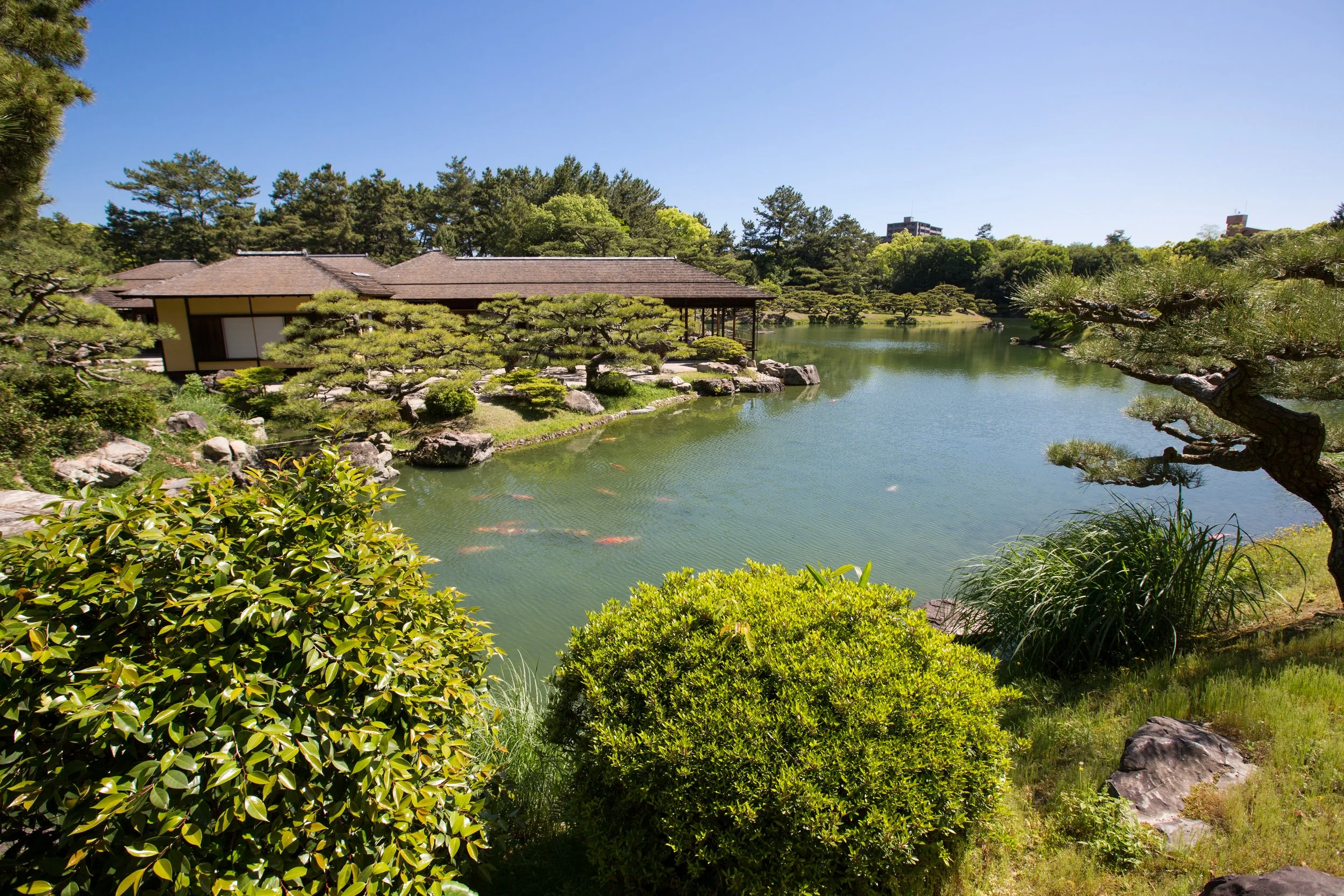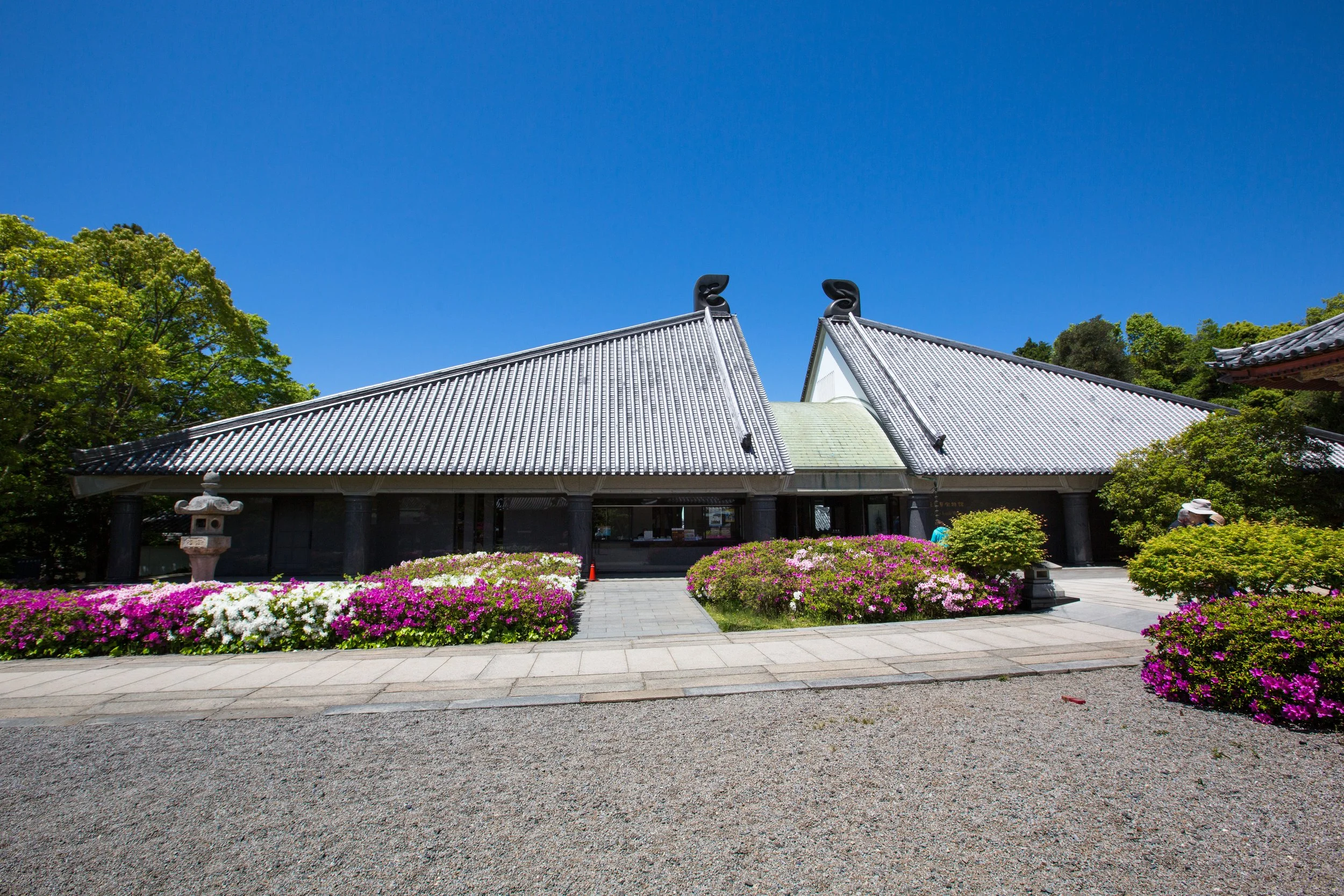Takamatsu
May 7, 2019
Takamatsu, An Inland Sea Port
Venturing further through the Seto Inland Sea, we made port this day in the city of Takamatsu. Located on the island of Shikoku, Takamatsu is the capital city of the Kagawa Prefecture, Japan’s smallest prefecture. Founded in 1890, Takamatsu has been a political and economic power for this area since the Edo Period (1603-1867), and boasts a population of about 420,000 people.
Our dock location sported a pier that jutted out into the bay many hundreds of metres.
Thought to be a centre for rail traffic and industry that supported the war effort, on July 3, 1945 Takamatsu was targeted by the U.S. Bomber Command and 128 B-29 planes dropped 800 tons of incendiary bombs on the city. Almost 80% of the built up areas of the city were destroyed.
Today the city hosts branch offices of many of the nationwide companies, and this plays an important role in the prosperity of the region. On September 26, 2005, the town of Shionoe was merged into Takamatsu, and on January 10, 2006, Takamatsu absorbed the towns of Aji, Mure, Kagawa, Kōnan and Kokubunji. Takamatsu hosts most of the national government’s branch offices for all of Shikoku.
Ritsurin Garden
This must be the regular feeding place for the Koi fish, as they crowded around anytime someone came up to the water’s edge.
One of the main attractions for tourists that visit Takamatsu, is the Ritsurin Garden. Considered by the city to be its most important cultural asset, it closely resembles a daimyo strolling garden widely seen in the 17th and 18th centuries. It’s a type of traditional Japanese garden consisting of rolling hills and ponds that have been expertly crafted and maintained.
A detailed map of Ritsurin Garden.
One of the lovely things about coming to this sort of garden is that they are large enough not to feel crowded. Encompassing an area of roughly 400 metres by 700 metres, Ritsurin Garden seemingly has the ability to gobble up large numbers of people. Even with us visiting during Golden Week in Japan, when most locals are off on a national holiday, we didn’t in any way feel overwhelmed with people. The only possible exception during our visit was when the large group of elementary school children entered, all dressed in their immaculate uniforms.
The Ritsurin Garden gobbled up this large group of children. They all disappeared within minutes of walking by us and we never saw them again in the few hours we were wandering about the garden.
The History of Ritsurin Garden
A broad shot of the most beautiful landscape in the garden.
Text from a plaque located on site.
“It is believed that Ritsurin Garden was originally created in the late 16th century, from a garden belonging to the Sato Clan located in the southwest corner of the present garden. What is now the Nanko Pond was created around 1625, when Takatoshi Ikoma ruled the Sanuki Province (present-day Kagawa). In 1642, Yorishige Matsudaira began ruling the Takamatsu Domain and inherited the garden. He and the successive generations of his family kept developing the garden over the years, and the 60 scenic spots were named when the domain's fifth lord, Yoritaka Matsudaira, was in power in 1745. The Matsudaira clan used Ritsurin Garden as their private retreat for 228 years, over 11 generations, until it became open to the public as a prefecturally-owned garden in 1875. In 1953, the garden was officially designated as a Special Place of Scenic Beauty by the national government's Agency for Cultural Affairs.”
Yashimaji Temple
Pretty darn good shape for a wood structure that is over 500 years old.
This temple was founded in the year 754 by the Chinese monk Ganjin, which was the Nara Period of Japanese history. Later, in 815 the temple was converted to Shingon Buddhism and moved to its present location on the south side of the large, flat topped lava plateau on Yashima Island east of Takamatsu. The main hall still stands today after its construction in 14th century during the Kamakura Era. It’s classified as an Important Cultural Property, and the bell in the tower is also from the 14th century. Yashimaji Temple is listed as the 84th temple on the Shikoku 88 Temple Pilgrimage.
The stone carving of Minoyama Daimyojin, on the left, with his mate. This tanuki was said to be devoutly monogamous, which is why couples come for its blessing for a strong family.
An important addition to the temple are the two stone statues, one of which is the tanuki Minoyama Daimyojin, the male Yashima Tasaburo Badger, and one of three badgers species that are native to Japan. Said to have the ability to take the form of others, Minoyama Daimyojin is said to have transformed into the shape of an old man and guided the Grand Priest Kobo to the top of the mountain when he was lost in the fog. Using its disguised appearance, Minoyama Daimyojin is said to have influenced the actions of numerous individuals in a positive way throughout history. Today the large testicled Minoyama Daimyojin has reached the status of demi-god, and is believed to bestow good fortune on married couples who come from all over Japan to get the blessing of good fortune for their children and family.
This temple was an outstanding example of Japanese craftsmanship, pride and an attention to detail that us from the west rarely get to see.
Arriving at the temple
The entrance gate to the temple.
After a long windy drive up the mountain we finally arrived at the temple. Outside the temple on the path from the parking area were a wonderful assortment of murals that were telling a story. Unfortunately the colourful murals had no English text, so we didn’t know what they were depicting.
Inside the temple grounds
The large, but closed to us, Treasure House.
Walking around the temple grounds was, as always, a treat for the eyes. For people who can recognize and appreciate extremely good craftsmanship, it’s reassuring to know that there are places in the world that one can go and still see it. Even if it’s hundreds of years old. Unfortunately for us, the large Treasure House was not open for visitors when we were there, so we couldn’t view many of the historical artifacts unique to this temple. The images below pretty much speak for themselves. We had no tour commentator to explain anything to us, and precious few signs.


